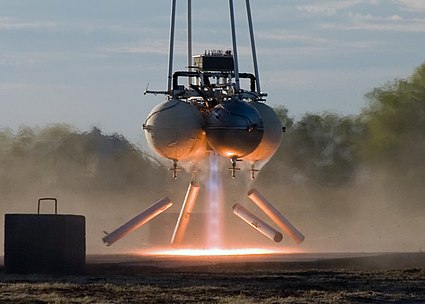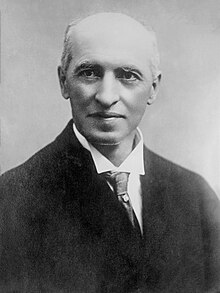The North America Portal

North America is a continent in the Northern and Western Hemispheres. North America is bordered to the north by the Arctic Ocean, to the east by the Atlantic Ocean, to the southeast by South America and the Caribbean Sea, and to the west and south by the Pacific Ocean. The region includes the Bahamas, Bermuda, Canada, the Caribbean, Central America, Clipperton Island, Greenland, Mexico, Saint Pierre and Miquelon, Turks and Caicos Islands, and the United States.
North America covers an area of about 24,709,000 square kilometers (9,540,000 square miles), representing approximately 16.5% of the Earth's land area and 4.8% of its total surface area. It is the third-largest continent by size after Asia and Africa, and the fourth-largest continent by population after Asia, Africa, and Europe. , North America's population was estimated as over 592 million people in 23 independent states, or about 7.5% of the world's population. In human geography, the terms "North America" and "North American" sometimes refer to just Canada, the United States, Mexico, and Greenland.
It is unknown with certainty how and when first human populations first reached North America. People were known to live in the Americas at least 20,000 years ago, but various evidence points to possibly earlier dates. The Paleo-Indian period in North America followed the Last Glacial Period, and lasted until about 10,000 years ago when the Archaic period began. The classic stage followed the Archaic period, and lasted from approximately the 6th to 13th centuries. Beginning in 1000 AD, the Norse were the first Europeans to begin exploring and ultimately colonizing areas of North America.
In 1492, the exploratory voyages of Christopher Columbus led to a transatlantic exchange, including migrations of European settlers during the Age of Discovery and the early modern period. Present-day cultural and ethnic patterns reflect interactions between European colonists, indigenous peoples, enslaved Africans, immigrants from Europe, Asia, and descendants of these respective groups. (Full article...)
The Grass Fight was a small battle during the Texas Revolution, fought between the Mexican Army and the Texian Army. The battle took place on November 26, 1835, just south of San Antonio de Béxar in the Mexican region of Texas. The Texas Revolution had officially begun on October 2 and by the end of the month the Texians had initiated a siege of Béxar, home of the largest Mexican garrison in the province. Bored with the inactivity, many of the Texian soldiers returned home; a smaller number of adventurers from the United States arrived to replace them. After the Texian Army rejected commander-in-chief Stephen F. Austin's call to launch an assault on Béxar on November 22, Austin resigned from the army. The men elected Edward Burleson their new commander-in-chief.
On November 26, Texian scout Deaf Smith brought news of a Mexican pack train, accompanied by 50–100 soldiers, that was on its way to Bexar. The Texian camp was convinced that the pack train carried silver to pay the Mexican garrison and purchase supplies. Burleson ordered Colonel James Bowie to take 45–50 cavalry and intercept the train. An additional 100 infantry followed. On seeing the battle commence, Mexican General Martín Perfecto de Cos sent reinforcements from Bexar. The Texans repulsed several attacks by Mexican soldiers, who finally retreated to Bexar. When the Texians examined the abandoned pack train they discovered that, instead of silver, the mules carried freshly cut grass to feed the Mexican Army horses. Four Texians were injured, and historian Alwyn Barr states that three Mexican soldiers were killed, although Bowie and Burleson initially claimed the number was much higher. (Full article...)

Arthur Lewis Watkins Sifton PC PC (Can) KC (October 26, 1858 – January 21, 1921) was a Canadian lawyer, judge and politician who served as the second premier of Alberta from 1910 until 1917. He became a minister in the federal cabinet of Canada thereafter. Born in Canada West (now Ontario), he grew up there and in Winnipeg, where he became a lawyer. He subsequently practised law with his brother Clifford Sifton in Brandon, where he was also active in municipal politics. He moved west to Prince Albert in 1885 and to Calgary in 1889. There, he was elected to the 4th and 5th North-West Legislative Assemblies; he served as a minister in the government of premier Frederick Haultain. In 1903, the federal government, at the instigation of his brother (who was then one of its ministers), made Sifton the Chief Justice of the Northwest Territories. After Alberta was created out of a portion of the Northwest Territories in 1905, Sifton became the first Chief Justice of Alberta in 1907 and served until 1910.
In 1910, the Liberal government of Alberta premier Alexander Cameron Rutherford was embroiled in the Alberta and Great Waterways Railway scandal. The Lieutenant Governor of Alberta, George Bulyea, was a Liberal and determined that for the sake of the Alberta Liberal Party, Rutherford had to be pushed aside in favour of a new premier. When other prominent Liberals declined it, the position was offered to Sifton, who accepted it. As premier, Sifton smoothed over the divisions in the party that had caused and been exacerbated by the railway scandal. He made attempts to break with the Rutherford railway policy; when these were rebuffed by the courts, he adopted a course similar to Rutherford's. He unsuccessfully pursued the transfer of rights over Alberta's natural resources from the federal government, which had retained them by the terms of Alberta's provincehood. (Full article...)
The Canadian (French: cheval canadien) is a horse breed from Canada. It is a strong, well-muscled horse, usually dark in colour. It is generally used for riding and driving. Descended from draft and light riding horses imported to Canada in the late 1600s from France, it was later crossed with other British and American breeds. During the 18th century the Canadian horse spread throughout the northeastern US, where it contributed to the development of several horse breeds. During the peak popularity of the breed, three subtypes could be distinguished, a draft horse type, a trotting type and a pacing type. Thousands of horses were exported in the 19th century, many of whom were subsequently killed while acting as cavalry horses in the American Civil War. These exports decreased the purebred Canadian population almost to the point of extinction, prompting the formation of a studbook and the passage of a law against further export.
Experimental breeding programs in the early 20th century succeeded in re-establishing the breed to some extent, but mechanization, combined with two world wars, again resulted in the breed almost becoming extinct. In the 1980s, concerned with the declining population numbers, interested breeders undertook a promotional program, which resulted in renewed interest in the breed. By the 1990s, population numbers were higher, and genetic studies in 1998 and 2012 found relatively high levels of genetic diversity for a small breed. However, livestock conservation organizations still consider the breed to be at risk, due to low population numbers. (Full article...)Did you know...
- ...that in 1869 the Spanish colonial authorities banned Baseball in Cuba because Cubans began to prefer baseball to viewing bullfights, the Spaniards' national sport?
- ...that the Pewee Valley Confederate Memorial (pictured) is the only American Civil War obelisk monument in Kentucky to be made of zinc?
- ...that the word hurricane, used in the North Atlantic and Northeast Pacific, is derived from a native Caribbean Amerindian storm god, Huracan, via Spanish huracán?
- ... that Raul Macias, a Cuban-Mexican boxer parlayed his popularity into a successful career in telenovelas?
- ... that during the Dead Rabbits Riot of 1857, residents of Mulberry Street in New York City were forced to barricade themselves in their homes?
Selected panorama

Topics
Categories
List articles
Related portals
Northern America
Central America
Caribbean
WikiProjects
 North America
North America-
 Canada
Canada -
 Greenland
Greenland -
 Mexico
Mexico -
 Saint Pierre and Miquelon
Saint Pierre and Miquelon -
 United States
United States  Central America
Central America-
 Belize
Belize -
 Costa Rica
Costa Rica -
 El Salvador
El Salvador -
 Guatemala
Guatemala -
 Honduras
Honduras -
 Nicaragua
Nicaragua -
 Panama
Panama  Mesoamerica
Mesoamerica Caribbean
Caribbean-
 Antigua and Barbuda
Antigua and Barbuda -
 Bahamas
Bahamas -
 Barbados
Barbados -
 Bermuda
Bermuda -
 Cuba
Cuba -
 Dominica
Dominica -
 Dominican Republic
Dominican Republic -
 Grenada
Grenada -
 Haiti
Haiti -
 Jamaica
Jamaica -
 Puerto Rico
Puerto Rico -
 Saint Kitts and Nevis
Saint Kitts and Nevis -
 Saint Lucia
Saint Lucia -
 Saint Vincent and the Grenadines
Saint Vincent and the Grenadines -
 Trinidad and Tobago
Trinidad and Tobago
Associated Wikimedia
The following Wikimedia Foundation sister projects provide more on this subject:
-
Commons
Free media repository -
Wikibooks
Free textbooks and manuals -
Wikidata
Free knowledge base -
Wikinews
Free-content news -
Wikiquote
Collection of quotations -
Wikisource
Free-content library -
Wikiversity
Free learning tools -
Wikivoyage
Free travel guide -
Wiktionary
Dictionary and thesaurus
























